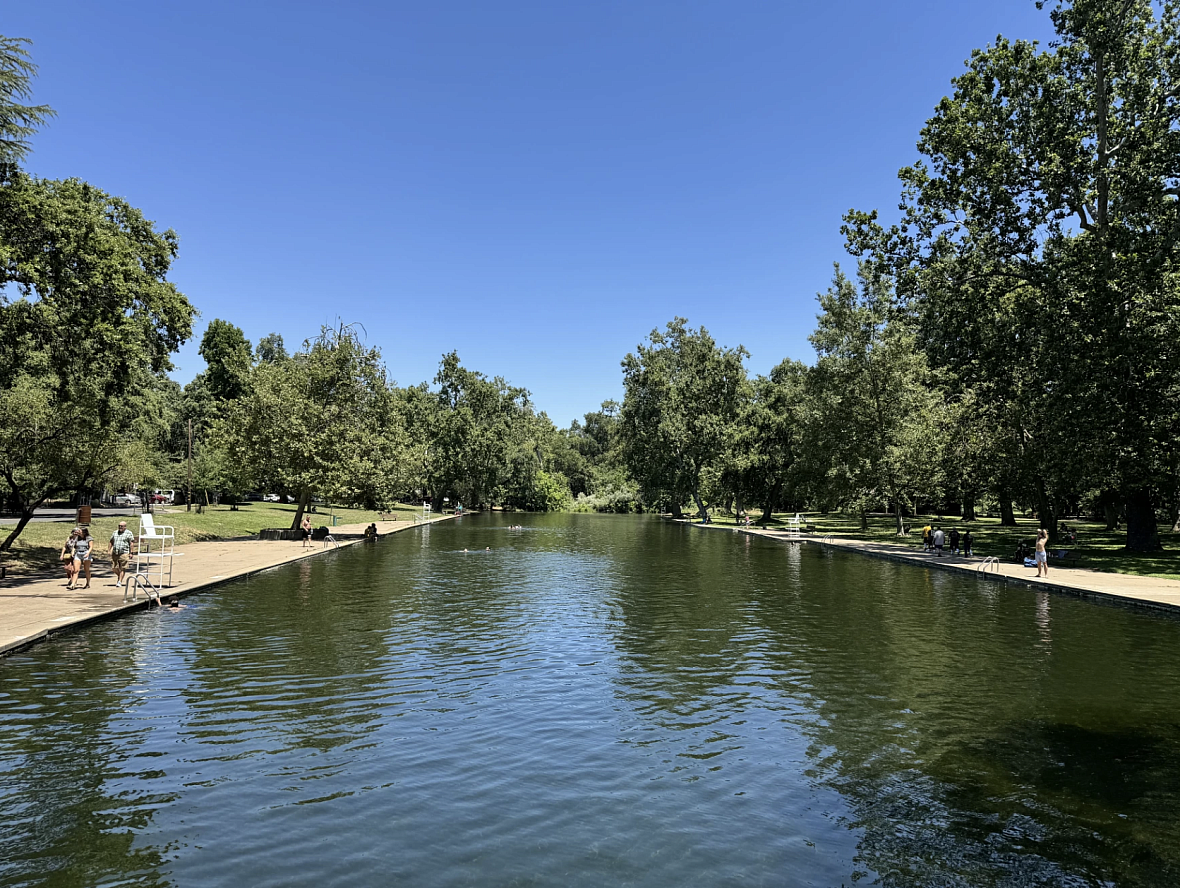Summer cooling costs projected to be the highest in a decade; here’s how to get help with your bill
The story was originally published by North State Public Radio with support from our 2024 California Health Equity Impact Fund.

Families cool off at Sycamore Pool on June 14, 2024, in Chico, Calif.
Adia White/NSPR
California is set to face another summer of record-high heat. The National Oceanic and Atmospheric Administration reports it's likely 2024 could be the warmest year on record globally.
With more heat comes a greater need for cooling. The cost of energy has jumped since the beginning of this year, with Pacific Gas and Electric Company (PG&E) raising its rates by around 13% in January. But rate hikes aren’t the only driver of skyrocketing bills. A report from the National Energy Assistance Directors Association (NEADA) this month estimates that cooling costs this summer will be the highest they’ve been in a decade. The hotter it is outside, the more energy it takes to cool down indoor temperatures, and that means higher costs. The biggest increases in cooling costs will be on the West Coast. Inland areas of California that see extreme heat are especially vulnerable.
Some aid programs are underfunded, others underused
The report comes as federal funding to help residents cover their utility bills has been slashed nationwide. Congress this year cut funding for the Low Income Home Energy Assistance Program (LIHEAP) by around $2 billion. The program helps provide aid to customers who are behind on their bills. The funds are distributed to various aid organizations that work directly with customers to help pay off utility debt and prevent power shutoffs due to non-payment. They are distributed on a first-come, first-served basis, leaving the possibility that organizations could run out of funds before the end of the year.
The need for these funds may also be underreported, as many who could use help might not be aware that these programs exist. In a 2022 report, PG&E said that more than 170,000 customers were eligible for the Family Electric Rate Assistance (FERA) program, while just under 40,000 customers had actually enrolled. That means thousands of eligible customers may be foregoing an 18% discount on their electricity bills.
Tracking the health costs of rising utility bills
The cost of this summer's record-high temperatures won’t just be financial. According to an analysis by the Associated Press, 2023 saw more deaths associated with extreme heat since record-keeping began. Projections indicate that 2024 is likely to be even more deadly. Advocates are concerned that the high costs of cooling homes will prevent residents from getting the relief they need. The risk of heat stroke and heat exhaustion is greater when people aren’t able to rest and cool off. This could put low-income residents who aren’t able to effectively cool their homes at greater risk.
Without assistance, families may also resort to dangerous practices to cut costs. A survey by NEADA found that a quarter of respondents who are now enrolled in aid said they previously kept their homes at unsafe or unhealthy temperatures to afford their bills. And 36% percent said that they went without food for at least a day, with 41% saying they skipped medical or dental care to meet utility costs.
How to get help with your PG&E bill
Depending on income and need, customers are eligible to enroll in programs that can discount monthly electricity bills, help pay late bills, or help make homes more energy-efficient. The majority of these programs are only available to customers who meet certain income requirements. However, there are a handful of options without income requirements. Those include payment arrangement plans and budget billing.
Low Income Home Energy Assistance Program (LIHEAP)
LIHEAP offers aid to help eligible residents pay their energy bills. Depending on available funding, the program could help residents who have already been disconnected from power due to non-payment or who are about to be. Funding is distributed on a first come first serve basis and renews at the end of the year.
Relief for Energy Assistance through Community Help
REACH helps residents with past-due energy bills. Eligible residents can apply for a credit that will apply to their balance. The credit may be up to 1,000 dollars for low-income customers, depending on how much they owe. Residents can apply for Reach through the dollar energy fund or a local community agency.
California Alternate Rates for Energy Program (CARE)
CARE provides a discount of 20% or more for eligible customers. Eligibility is based primarily on income. Those who are enrolled in certain public assistance programs, such as SNAP or Medi-Cal, are eligible, as are those who meet certain income requirements. The discount applies for two years before customers have to reapply.
Family Electric Rate Assistance Program (FERA)
FERA offers eligible families an 18% discount. It is intended for families who are slightly above the income threshold for CARE, but still make below $78,000 annually for a family of four.
Debt forgiveness through the Arrearage Management Plan (AMP)
Customers enrolled in CARE or FERA who have fallen behind on their bills may be eligible for up to $8,000 in debt forgiveness through AMP. Eligible customers must be at least 90 days behind on their bill and owe at least $500 for their gas and electricity bill or $250 for their gas bill.
Setting up a payment arrangement plan
Payment arrangement plans may help those who cannot afford to pay their full balance. Payment plans may allow customers to schedule payment of their current balance over several months. Creating a payment plan may help you avoid disconnection due to non-payment of a past due bill.


